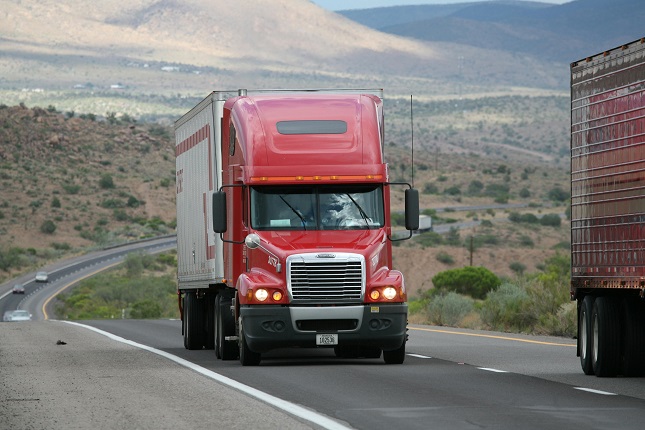Keeping cold cargo safe isn’t just about set points and door seals.
Fuel choices and fuel habits make or break a load.
Here’s a clear, driver-friendly guide to refer to fuel practices that protect your freight and your wallet.
Reefer Fuel 101: Red vs. Clear
Reefer fuel is dyed off-road diesel. It’s taxed differently and meant for the trailer’s engine, not the tractor.
Using clear, on-road diesel in the reefer won’t hurt the unit, but it costs more.
Using dyed fuel in your tractor is illegal and can lead to big fines.
Keep tanks, nozzles, and receipts separate. Label caps and lock the reefer tank.
Know Your Burn Rate
You can’t plan fuel stops without a solid estimate of use.
- Newer units: roughly 0.4-1.1 gallons per hour
- Older units: often 1-3 gallons per hour
- Continuous mode burns more than start/stop (cycle) mode
Quick math example:
- 18 hours dock-to-dock
- Unit at 0.8 gph in continuous mode
- 18 × 0.8 = about 14.5 gallons
Add time for pre-cool, waiting, and unloading. Then add a buffer.
Ice cream, vaccines, and meat loads often need continuous mode. Produce may allow cycle mode. Confirm what’s allowed on the rate con or BOL, in writing.
Tank Size and the 1/4 Rule
Most reefer tanks hold around 50 gallons, though some go up to about 100.
Don’t trust the gauge alone. Many units stop drawing fuel well above empty because the pickup tube sits higher in the tank.
Treat 1/4 tank as empty. Many shippers want 3/4 or more at pickup.
Top off the night before to skip a morning scramble.
Seasonal Fuel and Additives
Cold weather is hard on fuel systems.
- Use winter blends or approved anti-gel when temps drop
- Keep spare anti-gel and know the mix ratio
- Drain water separators as part of your routine
- Consider a biocide if you store fuel; microbes grow in wet diesel
Gelled fuel can stall a unit and spoil a load. One missed additive step can cost thousands.
Clean Fuel = Safe Loads
Dirty fuel makes the unit work harder and burn more. Small habits help:
- Wipe the filler neck before fueling
- Keep the cap seal in good shape and tight
- Avoid sketchy yard tanks with poor filtration
- Stick to high-turnover truck stops for better fuel quality
- Service filters on schedule; don’t stretch intervals
Run Modes That Protect Product
- Continuous mode: Use for cargo that must stay tight to spec or for high-heat/humidity days. Less temp swing, more fuel.
- Start/stop mode: Good for freight that tolerates a small band of temperature swing. Saves fuel. Use only if the shipper allows it.
- Sensor choice: Many shippers want “return air” control for product safety. Ask before you roll.
- Defrost: Make sure auto-defrost is set so coils don’t ice up and starve airflow.
Pre-Cool the Trailer, Not the Product
Your reefer is a thermostat, not a blast chiller. Pre-cool the trailer to the set point before loading.
Pulp the freight and record temps if required. If the product is too warm, stop and call.
Trying to “pull it down” on the road wastes fuel and risks rejection.
Door Time = Fuel Time
Warm, wet air is the enemy.
- Turn the unit off while doors are open, if the shipper allows
- Load during cooler hours when you can
- Limit door cycles and keep curtains in place
Less humidity means less icing and less work for the unit. That saves fuel and protects the cold chain.
Plan Your Fuel Like Your Route
- Map stops that sell reefer fuel; not every station does
- Set alerts at 50% and 25% tank if you use telematics
- Keep fueling receipts; some receivers ask for proof
- Build in time for pre-cool and post-trip fuel checks
Records That Back You Up
Shippers and receivers care about proof. Keep:
- Fuel level at pickup and delivery
- Mode, set point, and sensor used
- Temperature readings (trailer and pulp, if taken)
- Any mid-trip fueling or alarms
These notes support FSMA practices and help settle disputes fast.
Quick Checklist Before You Roll
- Fuel tank 3/4 or higher
- Correct fuel for season; anti-gel on board
- Trailer pre-cooled to set point
- Mode and sensor match shipper instructions
- Clean filler neck, tight cap, no leaks
- Telematics alerts set (if equipped)
- Tools: flashlight, gloves, temp probe, spare fuses
Final Thought
Every lane and load is unique, but good fuel habits stay the same: clean fuel, right mode, tight records, and never flirting with a low tank.
Do that with care, and your cold cargo arrives safe, without drama.
That’s how you protect the freight and keep claims off your back with the least fuel shock possible and the highest chance of a smooth delivery.









































